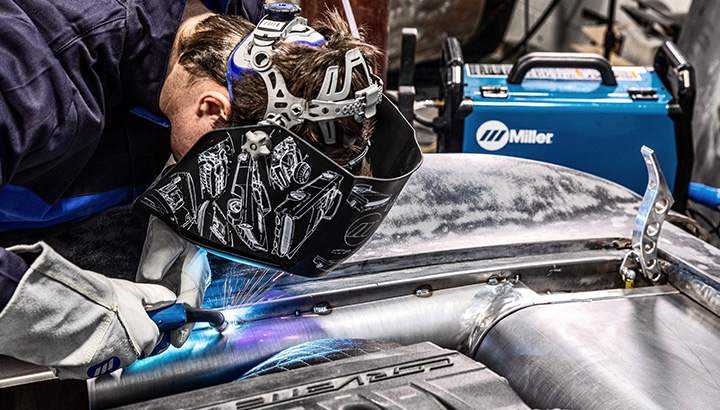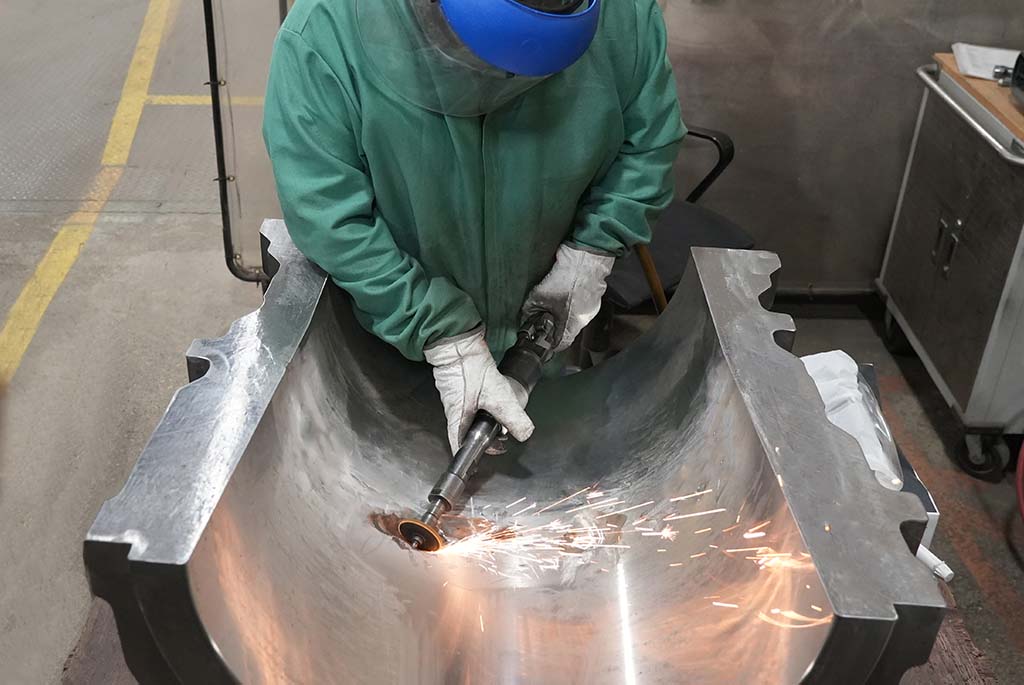Root reasons behind weld porosity and how Belgrade Welding addresses them
Wiki Article
Everything about Welding: Secret Insights Into Techniques and Best Practices for Success
Welding encompasses a variety of techniques, each suited for particular materials and applications. Recognizing these methods, such as GMAW, SMAW, and TIG, is important for accomplishing optimal outcomes. In addition, the appropriate devices and safety and security techniques can not be neglected. As prep work and fixing play critical roles in the welding process, understanding these elements can significantly enhance the quality of the final item. What are the crucial aspects that ensure a successful weld?Recognizing Different Welding Methods
Welding techniques encompass a variety of methods, each suited to certain applications and products. Among one of the most common techniques are Gas Metal Arc Welding (GMAW), Secured Metal Arc Welding (SMAW), and Tungsten Inert Gas Welding (TIG) GMAW, likewise referred to as MIG welding, is prominent for its speed and flexibility, making it excellent for slim products. SMAW, or stick welding, is preferred for its simpleness and effectiveness in outdoor atmospheres, particularly with thicker steels. TIG welding uses accuracy and control, making it suitable for complex work and non-ferrous steels (Montana Mobile Welding and Repair). Each technique has its special advantages and factors to consider, permitting welders to select the most effective technique based on the task's demands, product kind, and desired results. Comprehending these strategies is important for effective weldingVital Welding Equipment and Devices
While various welding strategies need particular skills, the ideal devices and devices are equally essential for accomplishing high quality results. Necessary welding devices includes welding equipments, which vary relying on the method-- such as MIG, TIG, or stick welding. Safety gear, consisting of gloves, aprons, and headgears, guarantees safety and comfort during the procedure. On top of that, components and clamps aid protect materials in position, making sure accuracy in welds. Consumables like welding poles, wire, and shielding gas are also critical components that influence the quality of the weld. Tools such as cutters and mills facilitate surface preparation and post-weld finishing, adding to a specialist result. Buying high-quality devices eventually boosts the performance and performance of welding projects.Safety And Security Practices in Welding
Proper safety and security techniques are vital in the welding industry to shield workers from prospective hazards. Welders need to put on suitable personal protective equipment (PPE), including helmets with appropriate shading, gloves, and flame-resistant clothes. Appropriate ventilation is vital to decrease exposure to dangerous fumes and gases created throughout the welding process. Furthermore, workers should be learnt the proper handling of welding tools to avoid mishaps. Fire safety and security measures, such as maintaining flammable products away from the welding location and having fire extinguishers readily available, are required. Regular assessments of equipment and offices can aid determine potential risks prior to they bring about mishaps. By adhering to these security methods, welders can create a more secure working atmosphere and decrease dangers connected with their profession.Readying Products for Welding
Preparing materials for welding is a crucial action that significantly affects the top quality and stability of the end product (Belgrade Welding). Appropriate preparation includes cleaning up the surface areas to remove pollutants such as rust, dust, and oil, which can jeopardize the weld. Methods such as grinding, fining sand, or making use of solvents are typically employed to accomplish a clean surface area. In addition, making sure that the products fit with each other comfortably is necessary; voids can lead to weak welds. It's likewise essential to take right into account the alignment and positioning of the components, as this will certainly influence the simplicity of welding and the final end result. Ultimately, selecting the proper filler product and making sure compatibility with the base steels is best welder for home use essential for achieving solid, durable weldsTips for Achieving High-Quality Welds
Achieving top quality welds calls for interest to detail and adherence to best practices throughout the welding procedure. Correct joint preparation is crucial, ensuring surfaces are complimentary and clean from impurities. Picking the proper filler product and welding technique based on the base steels is essential for ideal bonding. Maintaining regular travel speed and angle while welding can promote and protect against defects uniformity. In addition, regulating heat input is essential; excessive heat can bring about bending and weakened joints. If essential, consistently examining the welds during the process permits for immediate adjustments. Finally, using proper post-weld treatments, such as cleaning and tension relief, can improve the resilience and honesty of the weld, ultimately making sure a successful outcome.Repairing Common Welding Issues
Welding frequently offers obstacles that can impact the quality and stability of the last product. Common issues such as porosity, inconsistent weld grains, and getting too hot can develop, each calling for details troubleshooting strategies. Recognizing these issues is important for welders hop over to here to enhance their abilities and accomplish perfect results.Porosity Issues Discussed
Porosity can usually be overlooked, it remains a crucial problem in welding that can jeopardize the integrity of a finished item. Porosity refers to the visibility of tiny gas pockets within the weld grain, which can compromise the joint and lead to premature failing. This problem generally occurs from impurities, moisture, or inappropriate protecting gas coverage throughout the welding procedure. To reduce porosity, welders should verify that the base materials are tidy and completely dry, utilize ideal securing gases, and maintain regular welding specifications. Routinely checking the devices and environment can also assist determine potential issues before they materialize in the weld. Addressing porosity properly is crucial for accomplishing strong, long lasting welds that meet quality criteria.
Irregular Weld Beans
Inconsistent weld grains can substantially affect the top quality and toughness of a finished product. Various factors contribute to this issue, consisting of incorrect travel speed, incorrect amperage settings, and inconsistent electrode angles. When the welder moves too quickly, a grain might appear narrow and lack infiltration, while moving too slowly can cause extreme build-up. In addition, using perfect weld the wrong amperage can cause either undercutting or extreme spatter, both of which compromise weld stability. The welder's technique, such as irregular lantern motion, can additionally lead to uneven bead appearance. To minimize these troubles, welders should focus on maintaining steady, regulated activities and guaranteeing correct devices setups to attain uniformity in their welds. Consistency is vital to attaining solid and reputable welds.Getting Too Hot and Warping Issues
Extreme heat during the welding process can result in considerable overheating and warping problems, impacting the structural integrity of the work surface. These troubles frequently show up as distortion, which can jeopardize placement and fit-up, making more assembly challenging. Factors adding to overheating consist of the option of welding criteria, such as voltage and travel speed, as well as the type of material being bonded. To mitigate these issues, welders ought to maintain constant travel speed and suitable warmth input while monitoring the work surface temperature. Furthermore, preheating or post-weld warmth therapy can assist relieve stress and anxieties triggered by rapid cooling - Montana Mobile Welding and Repair Fabrication. Routine evaluation and adherence to ideal techniques are crucial in preventing overheating and making sure the longevity and dependability of bonded frameworksFrequently Asked Questions
What Are the Job Opportunities in the Welding Sector?
The welding market uses diverse profession opportunities, consisting of positions as welders, inspectors, educators, and engineers. Experts can operate in production, building, aerospace, and vehicle sectors, profiting from strong demand and affordable incomes in different roles.Exactly How Can I Boost My Welding Speed Without Compromising High Quality?
To boost welding rate without giving up high quality, one ought to exercise effective methods, maintain tools, enhance setups, and improve hand-eye sychronisation. Normal training and seeking responses can likewise greatly add to accomplishing quicker, top quality welds.What Certifications Are Available for Welders?
Countless certifications exist for welders, consisting of those from the American Welding Culture (AWS), the National Facility for Building Education And Learning and Study (NCCER), and different industry-specific companies. These credentials enhance employability and show skill effectiveness.How Does Welding Affect the Qualities of Metals?
Welding affects the residential or commercial properties of steels by changing their microstructure, which can bring about modifications in ductility, solidity, and stamina. Heat input and cooling rates throughout the process significantly impact these product characteristics.Can I Bonded Dissimilar Metals Together?

Report this wiki page